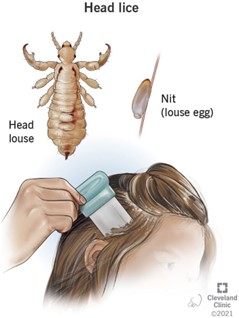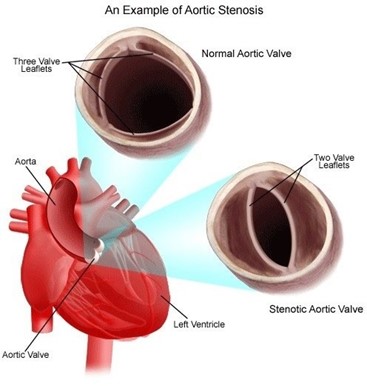A 3-year-old boy in a daycare facility scratches his head frequently, and the nurse confirms the presence of head lice. The nurse washes the child's hair with permethrin shampoo and calls his parents.
Which instruction should the nurse provide to the parents about treatment for head lice?
Take the child to a hair salon for a shampoo and a shorter haircut.
Dispose of the child's brushes, combs, and other hair accessories.
Rewash the child's hair following a 24-hour isolation period.
Wash the child's bed linens and clothing in hot soapy water.
The Correct Answer is D
The nurse should instruct the parents to wash the child's bed linens and clothing in hot soapy water to kill any remaining head lice and prevent reinfestation. The child's brushes, combs, and other hair accessories should also be washed in hot soapy water or disposed of. Taking the child to a hair salon for a shampoo and a shorter haircut is not necessary for treatment of head lice. Rewashing the child's hair following a 24-hour isolation period is not necessary if the permethrin shampoo has been used as directed.

Nursing Test Bank
Naxlex Comprehensive Predictor Exams
Related Questions
Correct Answer is C
Explanation
Infants with congenital heart defects may have difficulty with feeding due to increased effort required to breathe and feed at the same time. This can lead to poor weight gain and dehydration. Thus, it is important for the nurse to report any signs of poor feeding or oral intake to the healthcare provider. While audible heart murmur (choice A)and a high heart rate (choice B)are expected findings in infants with congenital heart defects, they do not necessarily indicate a need for immediate intervention. Weight gain of 2.2 lbs. (1 kg) in the last 48 hours (choice D)may actually be a positive finding in an infant with a congenital heart defect, but it is not as important to report as poor oral intake and suckling effort.

Correct Answer is A
Explanation
The nurse should inspect the posterior oropharynx of a child who is frequently swallowing after tonsillectomy to assess for bleeding or the presence of clots. Swallowing frequently can be a sign of postoperative bleeding, which is a potential complication of tonsillectomy.
Touching the tonsillar pillars to stimulate the gag reflex or asking the child to speak would not provide information about the presence of bleeding.
Assessing for teeth clenching or grinding is not related to this particular observation.

Whether you are a student looking to ace your exams or a practicing nurse seeking to enhance your expertise , our nursing education contents will empower you with the confidence and competence to make a difference in the lives of patients and become a respected leader in the healthcare field.
Visit Naxlex, invest in your future and unlock endless possibilities with our unparalleled nursing education contents today
Report Wrong Answer on the Current Question
Do you disagree with the answer? If yes, what is your expected answer? Explain.
Kindly be descriptive with the issue you are facing.
